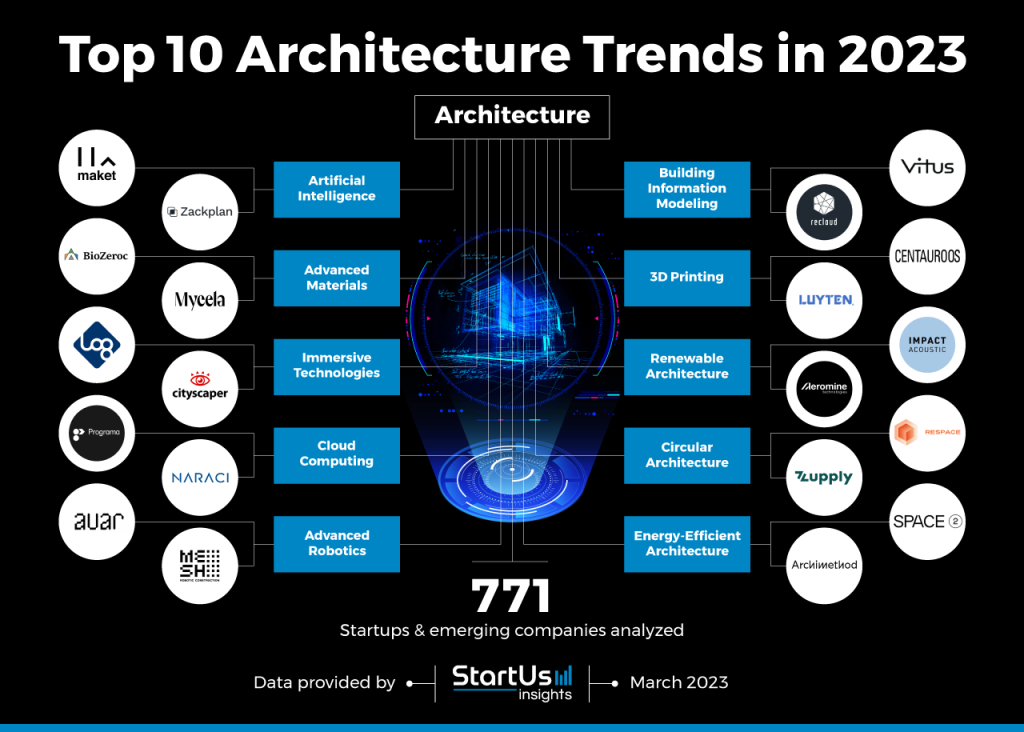Unlock The Power Of The Latest Technology Architecture Trends: Stay Ahead With Our Game-Changing Insights!
Latest Technology Architecture Trends
Introduction
Dear Readers,
2 Picture Gallery: Unlock The Power Of The Latest Technology Architecture Trends: Stay Ahead With Our Game-Changing Insights!


Welcome to our article on the latest technology architecture trends. In today’s rapidly evolving digital landscape, it is crucial for businesses to stay updated with the latest architectural approaches to ensure their systems are efficient, scalable, and secure. In this article, we will explore the emerging trends in technology architecture that are shaping the future of businesses across industries. So, let’s dive in and discover what the future holds!
Table of Contents

Image Source: celus.io
1. What are the latest technology architecture trends?
2. Who benefits from these trends?
3. When should businesses adopt these trends?

Image Source: startus-insights.com
4. Where are these trends being implemented?
5. Why are these trends important?
6. How can businesses leverage these trends?
What are the latest technology architecture trends?
🔍 Trend 1: Cloud-native Architecture
Cloud-native architecture refers to designing and building applications specifically for cloud environments. It enables businesses to leverage the scalability, flexibility, and cost-effectiveness of cloud platforms.
🔍 Trend 2: Microservices Architecture
Microservices architecture is an approach where applications are built as a collection of small, loosely coupled services. This modular design allows for easier scalability, maintainability, and faster development cycles.
🔍 Trend 3: Edge Computing
Edge computing brings computation and data storage closer to the source of data generation. It reduces latency and allows for real-time processing, making it ideal for applications that require quick decision-making.
🔍 Trend 4: AI and Machine Learning
AI and machine learning are revolutionizing technology architecture by enabling intelligent decision-making, automation, and predictive analytics. These technologies are being used in various domains, including cybersecurity, healthcare, and customer experience.
🔍 Trend 5: Blockchain
Blockchain technology ensures secure and transparent transactions by decentralizing data storage and eliminating the need for intermediaries. It is being explored in industries such as finance, supply chain, and healthcare.
🔍 Trend 6: Internet of Things (IoT)
The IoT connects devices, sensors, and systems to gather and exchange data. It enables businesses to collect valuable insights, automate processes, and create new revenue streams.
Who benefits from these trends?
🤝 Businesses of all sizes and industries can benefit from these technology architecture trends. Startups can leverage these trends to build scalable and cost-effective solutions from the ground up. Established enterprises can adopt these trends to modernize their existing systems, improve efficiency, and stay ahead of the competition.
When should businesses adopt these trends?
⏳ The timing to adopt these trends may vary depending on the industry, business goals, and existing infrastructure. However, as technology continues to advance rapidly, businesses should start exploring and evaluating these trends to identify opportunities and plan for future growth.
Where are these trends being implemented?
🌍 These technology architecture trends are being implemented across various sectors and industries globally. From healthcare and finance to manufacturing and retail, businesses are integrating these trends to enhance their operations, deliver better user experiences, and unlock new business opportunities.
Why are these trends important?
🔑 These technology architecture trends are important for several reasons:
✔️ Enhanced Scalability: Businesses can scale their applications seamlessly to meet growing demands.
✔️ Improved Efficiency: Modern architectural approaches enable faster development cycles and efficient resource utilization.
✔️ Enhanced Security: Newer architectural trends often come with advanced security features to protect against cyber threats.
✔️ Better User Experiences: By leveraging these trends, businesses can deliver personalized and seamless user experiences.
✔️ Competitive Advantage: Adopting the latest technology architecture trends can give businesses a competitive edge by enabling innovation and agility.
How can businesses leverage these trends?
🔧 Here are some steps businesses can take to leverage the latest technology architecture trends:
1. Conduct a thorough assessment of your existing architecture and identify areas for improvement.
2. Evaluate the potential benefits and challenges of adopting each trend for your specific business.
3. Create a roadmap for implementation, considering factors such as timelines, resources, and budget.
4. Collaborate with technology partners or consultants who specialize in the latest architectural trends.
5. Train and upskill your IT teams to ensure a smooth transition and successful implementation.
6. Continuously monitor and evaluate the impact of these trends on your business to make necessary adjustments.
Advantages and Disadvantages of latest technology architecture trends
Advantages:
1. Improved scalability and flexibility
2. Enhanced efficiency and resource utilization
3. Better security and data protection
4. Personalized and seamless user experiences
5. Competitive advantage and innovation
Disadvantages:
1. Complex implementation and integration
2. Potential compatibility issues with legacy systems
3. Higher upfront costs for infrastructure and training
4. Dependency on third-party services and providers
5. Continuous monitoring and upgrades required to stay up-to-date
Frequently Asked Questions (FAQ)
Q: Are these trends applicable to all industries?
A: Yes, these trends can be applied across various industries, although the specific use cases may vary.
Q: Do businesses need to completely overhaul their existing systems to adopt these trends?
A: It depends on the current state of your architecture. Gradual adoption or hybrid approaches can also be considered.
Q: How can microservices architecture benefit businesses?
A: Microservices architecture enables modular development, scalability, and independent deployment of services.
Q: Is edge computing only relevant for IoT applications?
A: While edge computing is commonly associated with IoT, it can also benefit other applications that require real-time processing.
Q: What are the potential risks of implementing blockchain technology?
A: Some challenges include scalability, regulatory compliance, and the need for industry-wide adoption.
Conclusion
By staying updated with the latest technology architecture trends, businesses can empower themselves to adapt to the evolving digital landscape and unlock new opportunities. Whether it’s cloud-native architecture, microservices, or edge computing, these trends offer numerous advantages such as scalability, efficiency, security, and better user experiences. However, businesses should also be aware of the potential challenges and carefully evaluate the suitability of each trend for their specific needs. With proper planning, collaboration, and continuous monitoring, businesses can leverage these trends to drive innovation, gain a competitive advantage, and thrive in the digital era.
Final Remarks
Dear Readers,
Technology architecture plays a crucial role in shaping the future of businesses. As technology continues to advance rapidly, it is essential to keep up with the latest trends to ensure your systems are efficient, scalable, and secure. However, it is important to note that each business is unique, and the suitability of these trends may vary. Before implementing any architectural changes, thorough evaluations, planning, and collaboration with experts are necessary. We hope this article has provided valuable insights into the latest technology architecture trends and inspired you to explore new possibilities for your business.
This post topic: Latest Technology Trends


